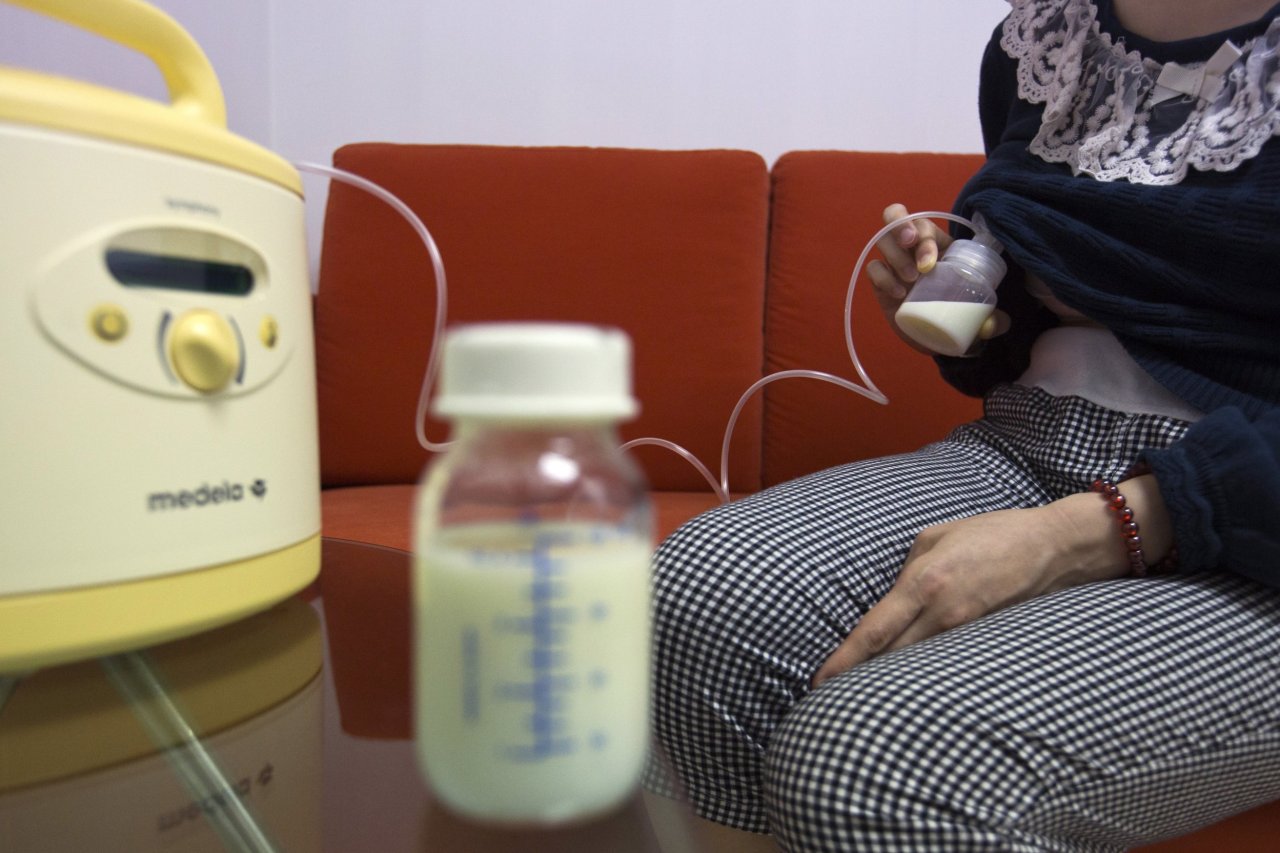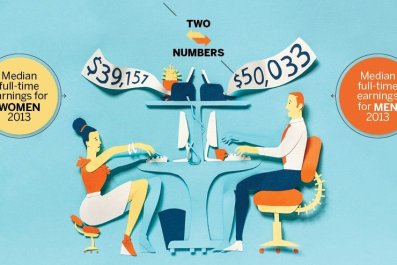As people around the world waited in line over the weekend for the newest version of the iPhone, more than 150 moms, dads, engineers, designers, health care professionals and educators met at MIT Media Lab for the Make The Breast Pump Not Suck Hackathon. The event's goal was to give the breast pump a much needed makeover—making it more efficient, more affordable and more comfortable for all moms.
The breast pump design hasn't changed much since the first mechanical pump was patented in the 1920s. In theory pumps are meant to give women the option of breast-feeding while on the go. In practice, however, they are anything but convenient.
Excerpts of mothers' stories from a March New York Times article that inspired the event shed light on some of the breast pump's current flaws.
"One friend, an executive in Washington, described pumping in an airport bathroom in San Juan, Puerto Rico, holding the plastic funnels to her breast as women touched up their makeup and gave her dirty looks. The only electrical outlet was next to the sinks.
"Another friend needed to pump during a conference call; she crossed her fingers that the client on the other line wouldn't ask about the incessant and curious sound in the background. The noise isn't the suction, as one might expect, but the motor. Our half-ton hybrid car is quieter.
"Another friend commented on the transparent plastic funnels: What product designer actually thought I would want to see my nipples getting sucked into small tubes over and over again?"
These concerns, and many more, were raised at the hackathon:
The problems of pumping being solved by #MLPump #hackathon. The ideas are amazing! ! pic.twitter.com/dmqiWSnoDG
— Kimberly Seals Allers (@iamKSealsAllers) September 21, 2014
This is where "Team Batman" came in—the first prize winners. Their "Mighty Mom" design is a smart utility belt that makes breast pumping discrete. The team stripped the pump down to its most basic components, limiting the number of items that would need to be transported. The design allows mothers to slip the suction cups into their bras, and run the tubing under their clothing to a hip utility belt that holds the largest parts—the motor and bottles. The sleek design lets mothers pump on the go. The prototype is powerful, portable and quiet (the team made sure to muffle the motor).
The #MLPump #hackathon winner!! Mighty Mom Utility Belt!! pic.twitter.com/tUvtneyZRZ
— Kimberly Seals Allers (@iamKSealsAllers) September 21, 2014
Not only did the group fix previous design flaws; they added smart technology to the mix. The Mighty Mom uses optical sensing that, with an infrared light, could read the volume, output, timing, quantity and milk content instantaneously. It then sends the information to your smartphone for analysis.
"This could really change the game," Erin Freeburger, a member of the winning team told Newsweek. "You're getting real information from pumping mothers. We don't have that. We don't know how long it takes the average mother to make four, six or eight ounces. We don't have the fat content of a mother pumping at one month versus a mother pumping at three months. We don't know how your volume changes Monday morning when you go back to work for the first time versus Friday afternoon when you've been pumping for five days and you've been mostly away from your infant. We can get real norms as opposed to just throwing out these general guidelines and making mothers feel inadequate."
Team Batman, made up of nearly 20 people, won $3,000 for their design. But Freeburger says they weren't involved for personal gain. Instead they hope the Mighty Mom will be the norm for moms in the near future.
Second prize—$2,000—was given to team "Helping Hands," and "Pump IO" won $1,000 for third prize. There were 10 proposals in total.
From here, two members of Team Batman will be sent to Silicon Valley to pitch their idea to venture capitalists. Though it is unclear how the money would be split if the design is a success—the hackathon was an open source event—the numbers suggest it could be lucrative. According to the Centers for Disease Control and Prevention's 2013 Breastfeeding Report Card, 77 percent of mothers breast-feed and the breast pump market is expected to reach 5.63 million units by 2015.
But after nearly 60 years of innovation stagnation, is change really on the horizon for the breast pump? Freeburger is optimistic. "It was an issue in the past that women dealt with on their own. People weren't talking about it, it's not a product that you flaunt," she said. The MIT hackathon gave moms a platform to be heard, and dads are helping to amplify the message. "There were a lot of dads there," she said, "Everyone is starting to realize this isn't a moms issue, this is a parents' issue."


























